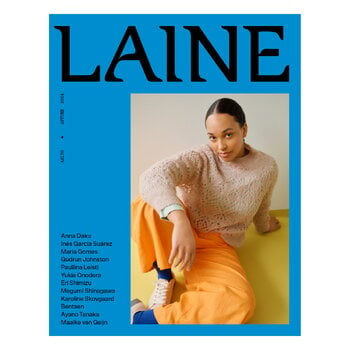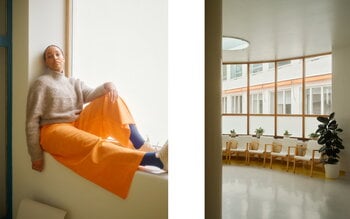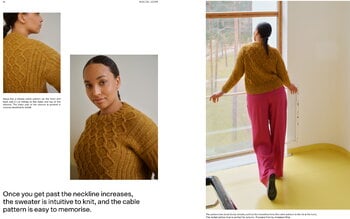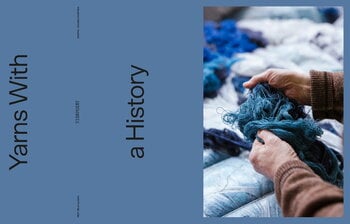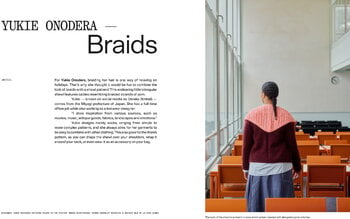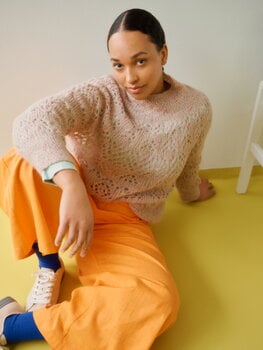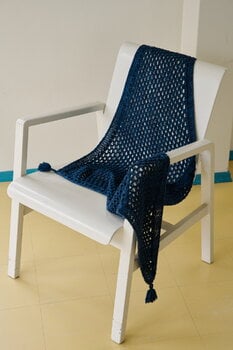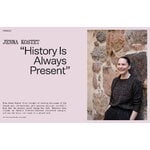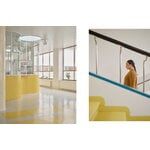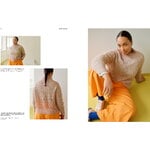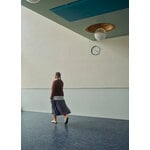Issue 22 of Laine Magazine is filled with warm knits, perfect for the season. The name of this autumn issue, Aalto, nods to Finnish architecture: the photos were taken at the Paimio Sanatorium designed by none other but Alvar Aalto himself! The colors of the hospital's corridors and the shapes of the building provide the perfect setting for the magazine's knitwear, featuring techniques such as cables, textured patterns and lace.
Laine Magazine contains knitting tips, interesting articles and stories from the world of wool, inspiring interviews, and seasonal recipes. The magazine is published three times per year, in both English and Finnish.
Our Autumn issue Laine 22, Aalto, features cosy yet stylish knits for the season! The issue is also a celebration of architecture — the photos were taken in the Paimio Sanatorium, designed by the famous Finnish architect Alvar Aalto. The building’s unique colours and shapes offered the perfect backdrop to our autumn knits, full of interesting styles and techniques from cables and lace to textured patterns.
Designers featured in this issue: Anna Daku, Inés García Suárez, Maria Gomes, Gudrun Johnston, Pauliina Leisti, Yukie Onodera, Eri Shimizu, Megumi Shinagawa, Karoline Skovgaard Bentsen, Ayano Tanaka and Maaike van Geijn.
